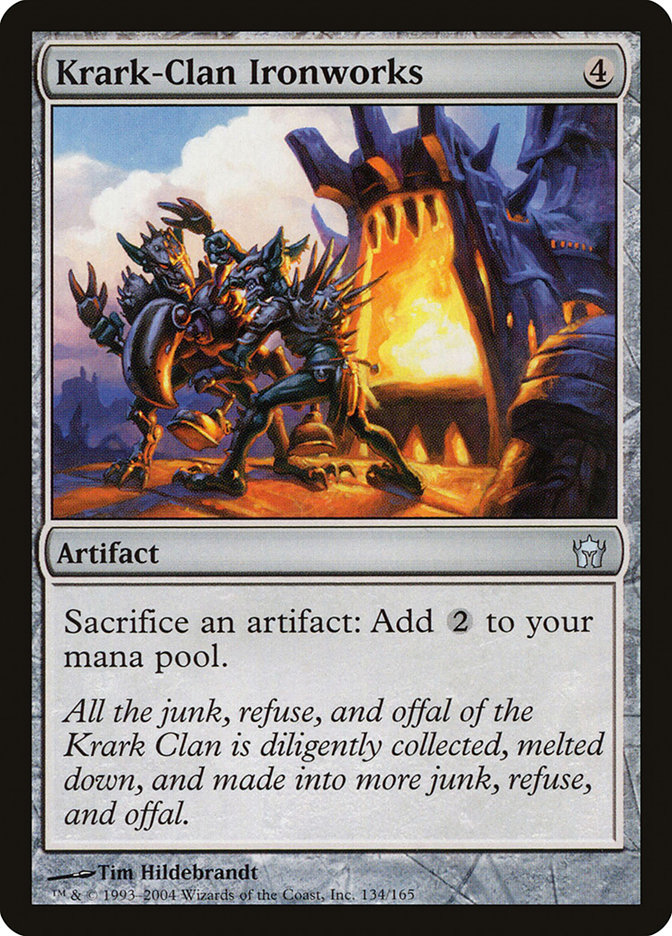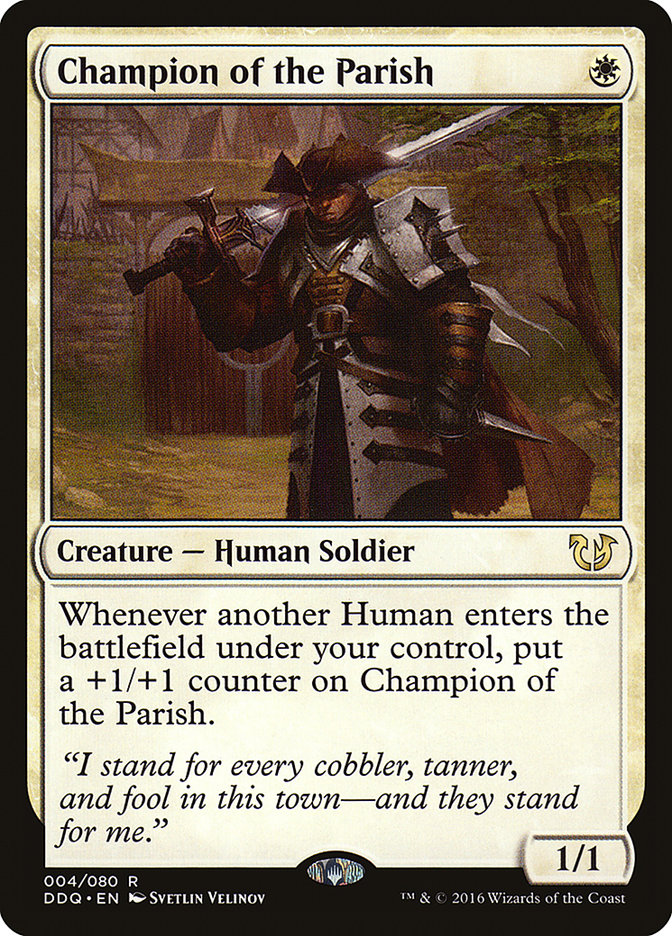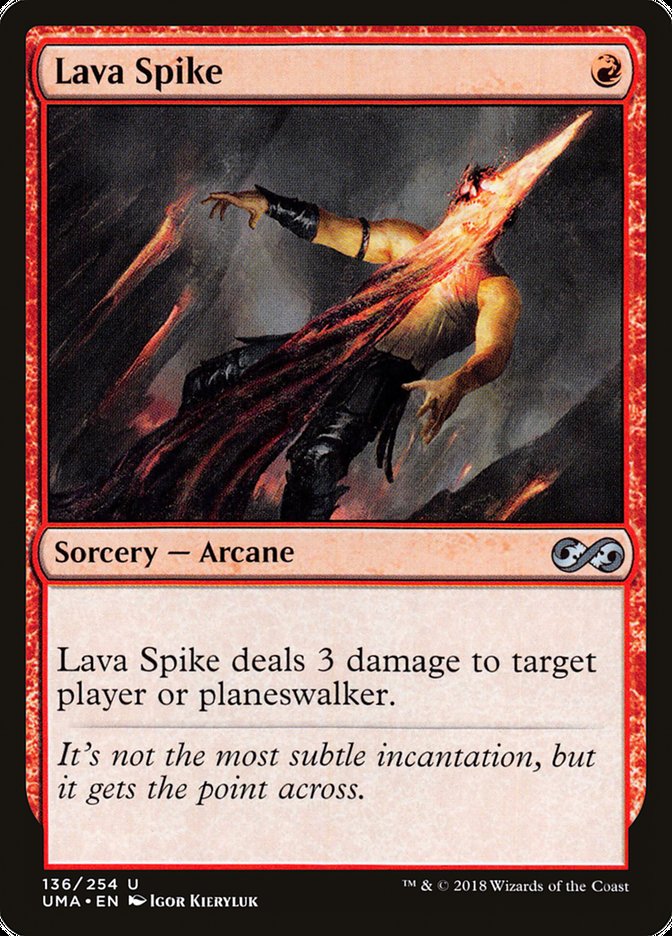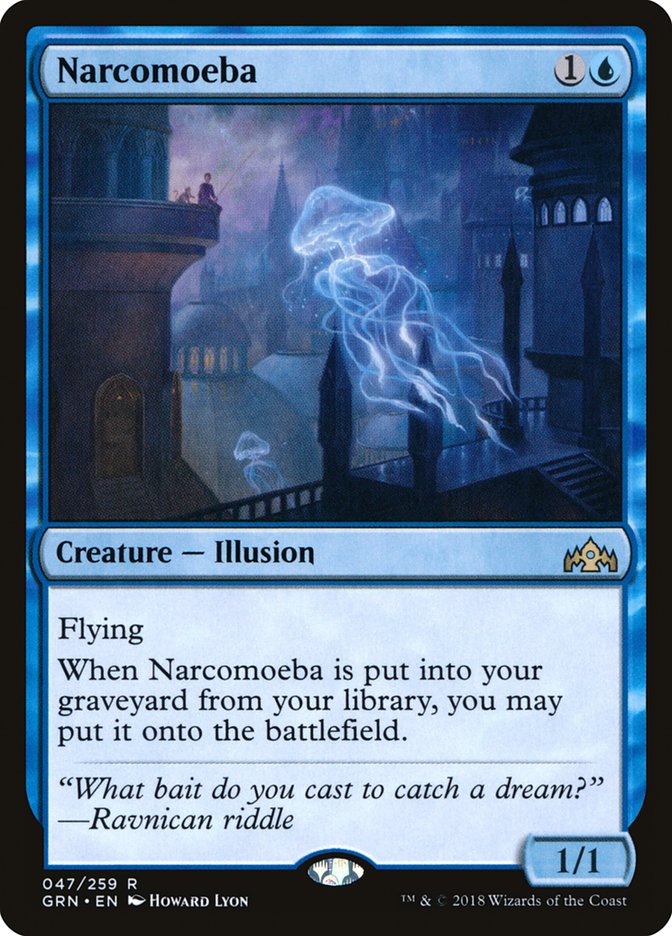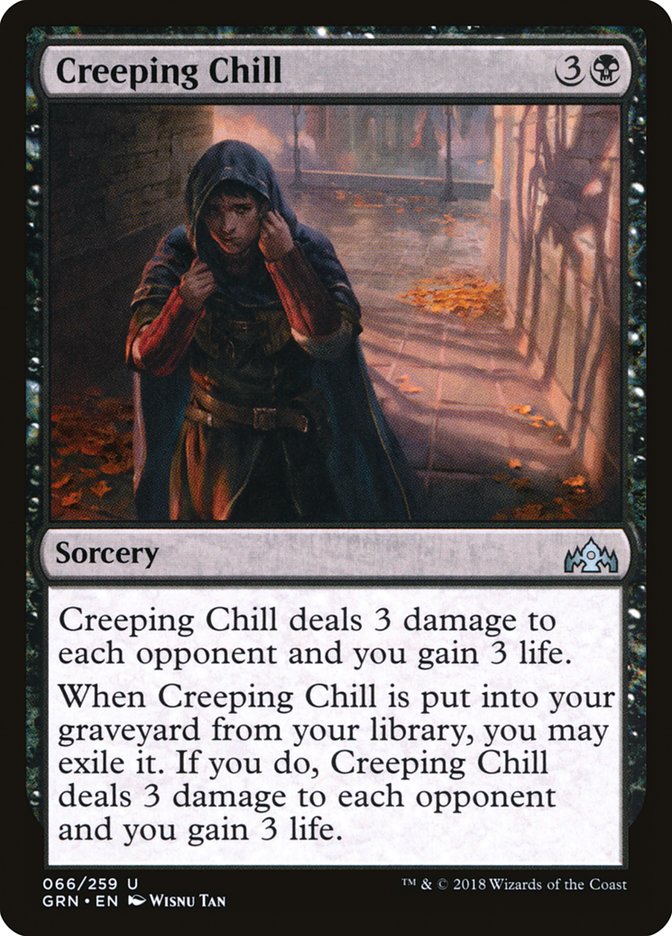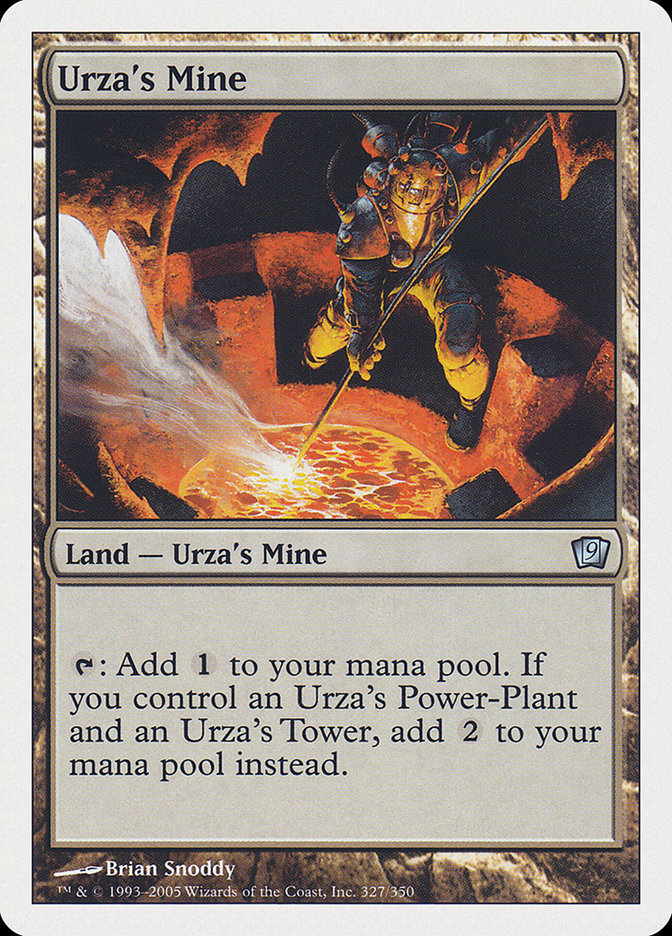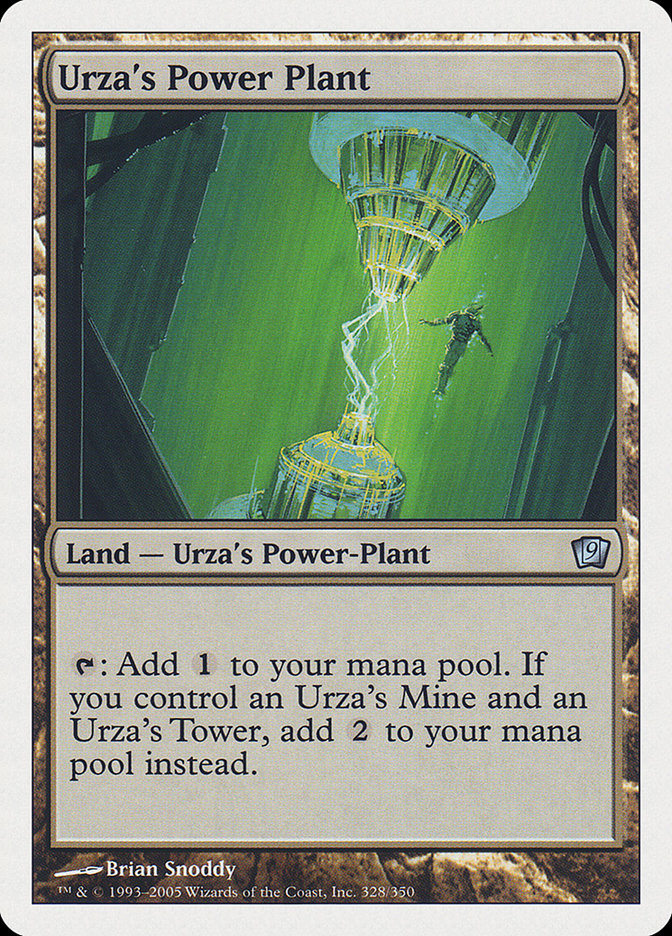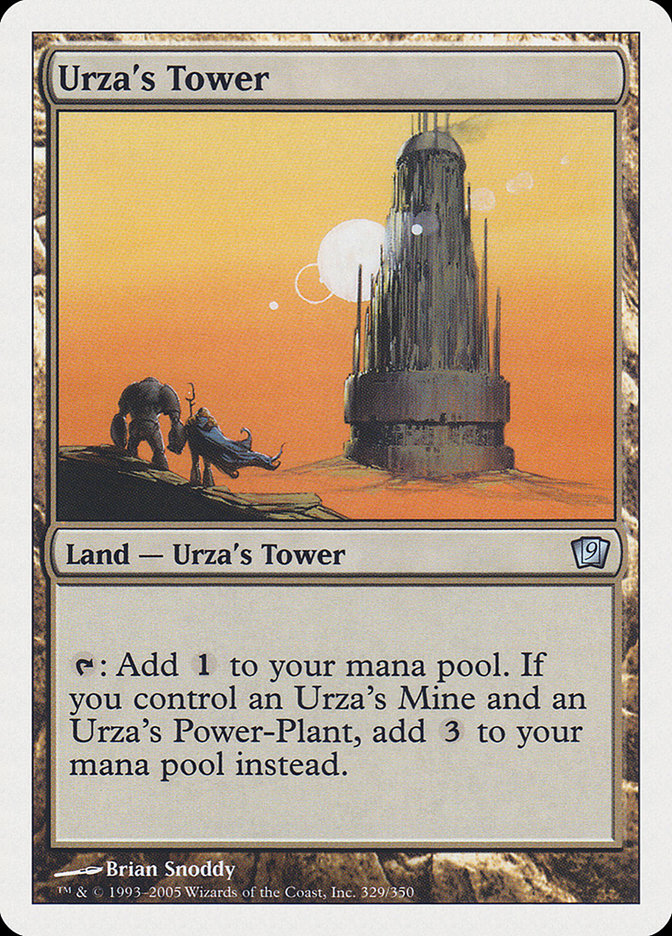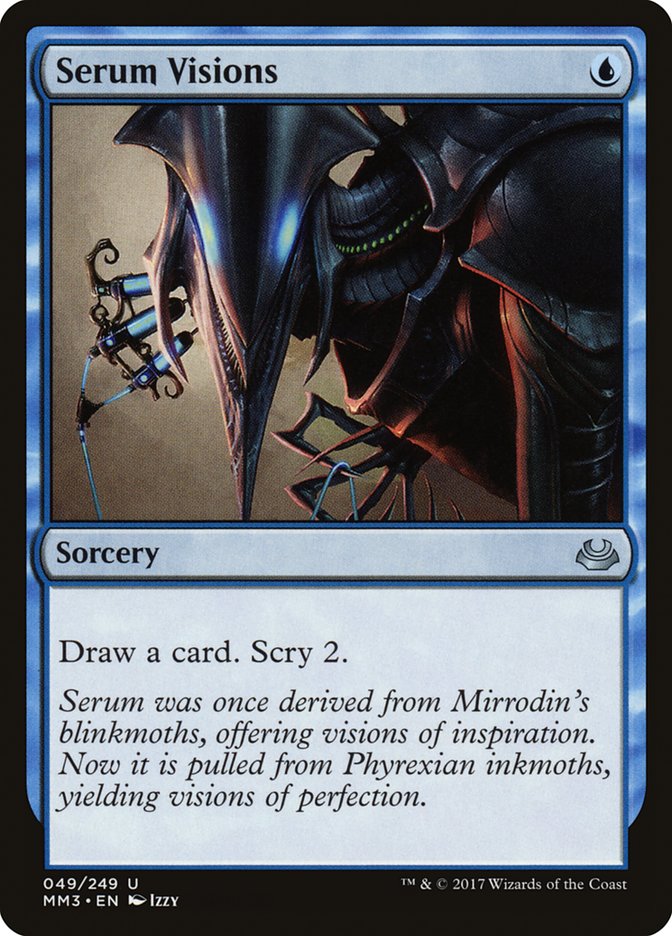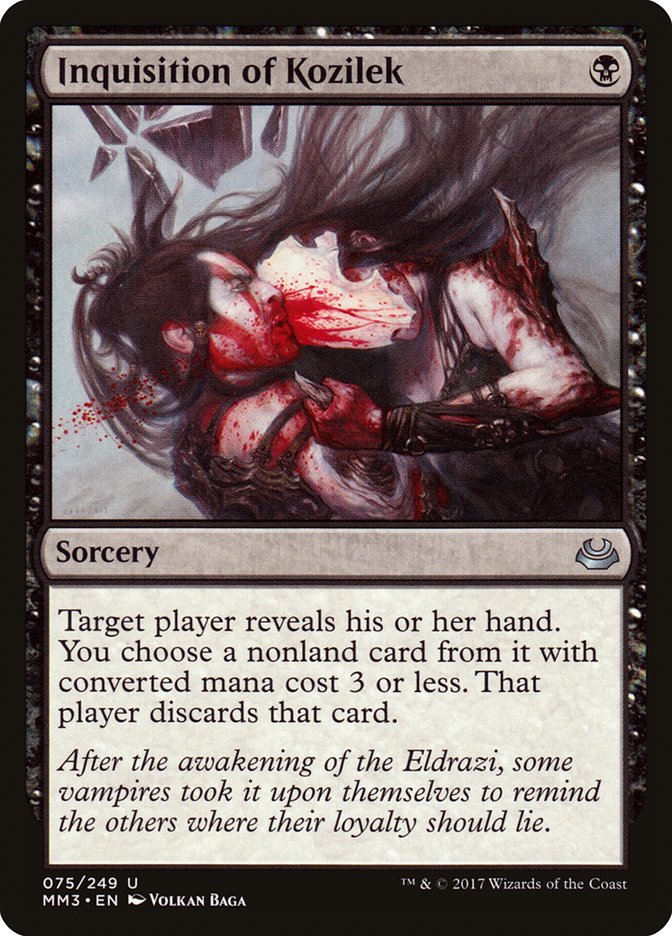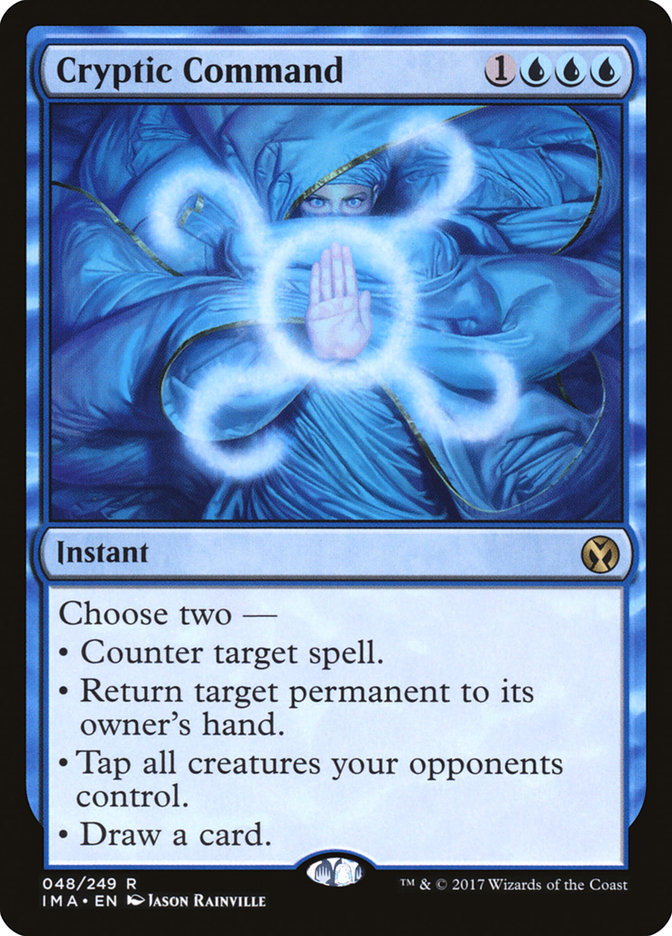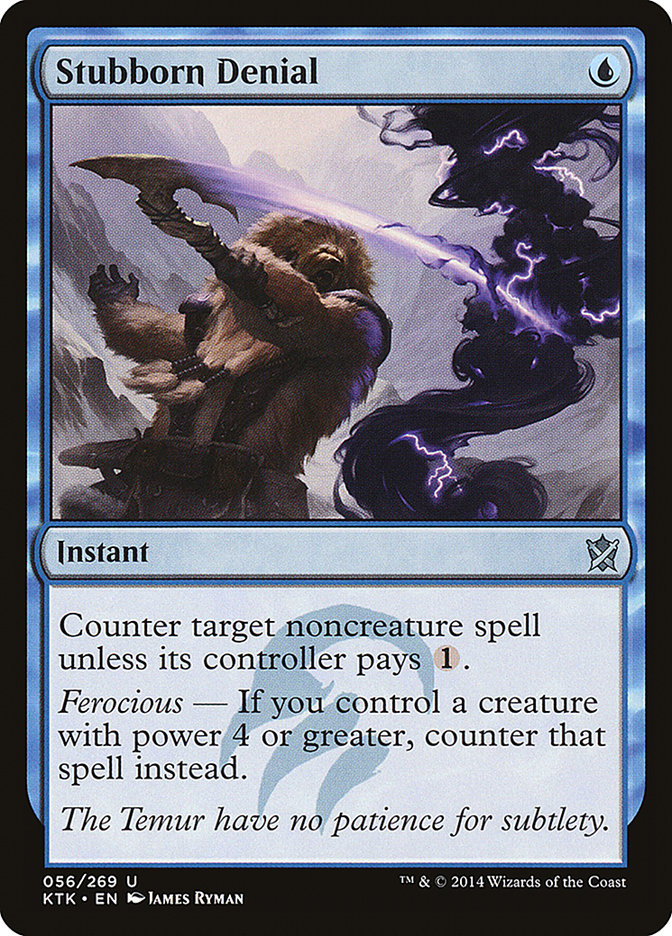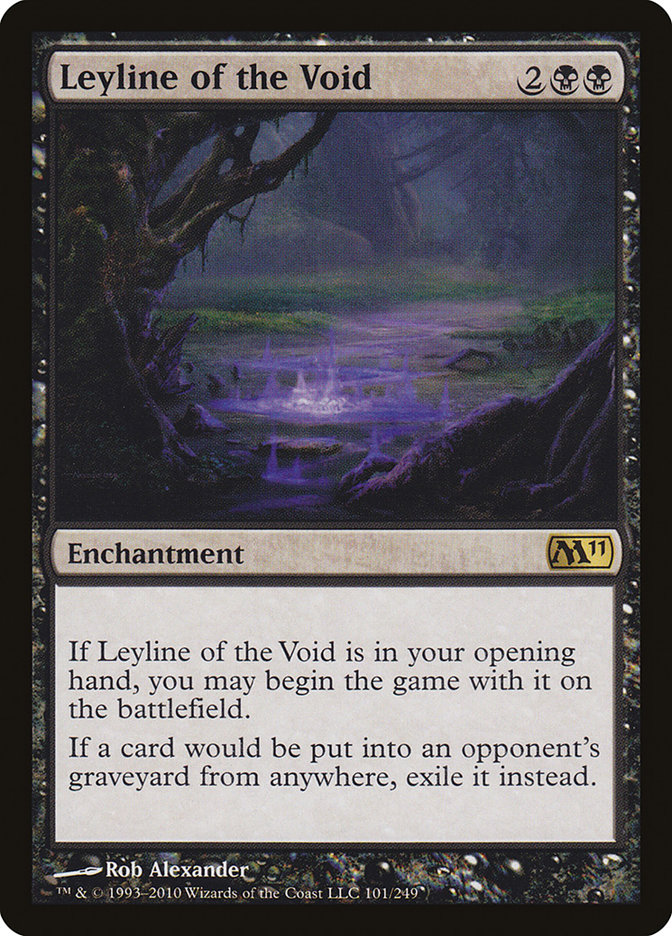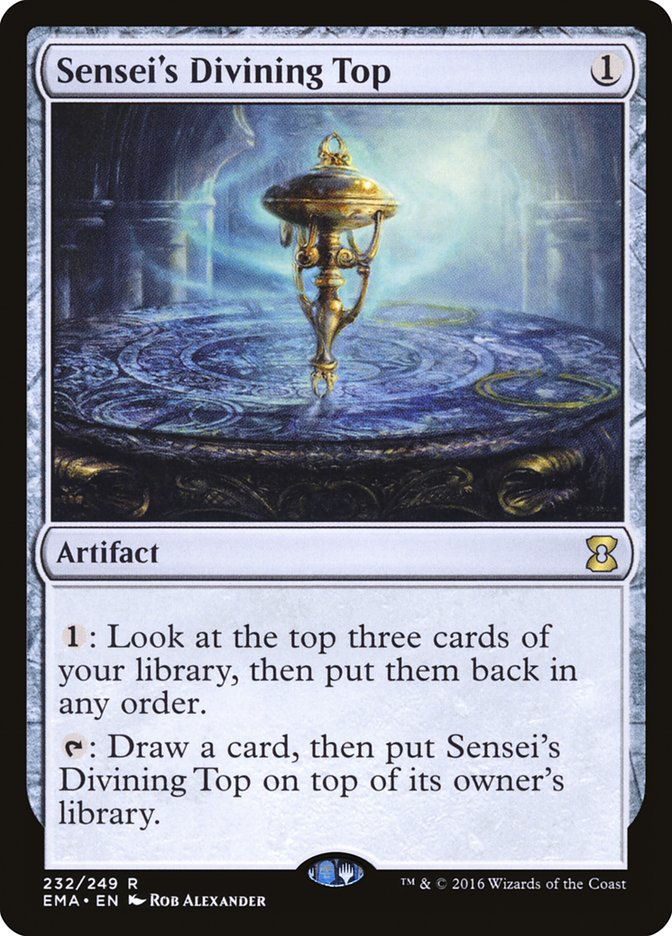It’s no secret that the London Mulligan is one of the hottest topics in Magic right now. In a world where people want cleaner games featuring more interactive gameplay, as well as the introduction of an algorithm that helps ensure better starting hands in best-of-one play on Magic Arena, it’s no surprise that Wizards of the Coast has been experimenting with a way to make all of that come true.
My biggest fear is that this new mulligan rule will greatly impact the older formats. WotC has stated in the past that they don’t want any new change to mulligans to influence deckbuilding or deck selection for tournaments. If you’re talking about Standard or Draft, I think there’s a good chance the London Mulligan will be a great thing for Magic. And as far as I’m concerned, banning a few cards in older formats to have Standard and Draft be a significantly more enjoyable experience is a sacrifice I’d be willing to make.
But before we get too deep, what is the London Mulligan, exactly?
“When you mulligan for the Nth time, you draw seven cards, then put N cards on the bottom of your library in any order.”
This week on VS Live! Ross Merriam and I will be testing it out to see just how busted (or reasonable) it actually is. After playing with the rule for a few matches, as well as talking about it at length with Ross, I’ve come to a few conclusions. And while I’m sure my opinion on the subject will change slightly over the next few weeks, I thought it best to get my thoughts down on paper as I experience how the London Mulligan feels, as well as what I’ve observed in our initial experimentation.
Linear Strategies
Linear strategies focus on a singular gameplan, executing with very little interaction with the opponent. Linear strategies are very common in Modern because the card pool is vast enough to support doing just about whatever you want. And when that thing is powerful, and is fast enough to ignore the opponent, there’s very little reason to go about interacting.
As formats evolve, we tend to see a sliding scale when it comes to interactivity, with the most interactive decks occasionally reigning supreme. In other formats, the majority of players opt to ignore each other, leaving a hole for the fastest, most consistent linear deck to come out on top. We’ve seen it dominate recently with Ironworks and Golgari Grave-Troll Dredge.
- Critical Mass
Some linear decks, like Burn or Humans, tend to mount advances on the opponent through sheer force of will. You cast your creature or burn spell, untap, and do it again and again until the opponent is dead. These types of decks require a critical mass of their spell type in order to secure the game. In this regard, the London Mulligan is not going to be very good. While some decks of this style can have their draw smoothed out via the London Mulligan, every mulligan is going to hurt significantly. For every mulligan you take, that’s one less burn spell to throw at the opponent’s face.
Decks that function by having most of their spells do the same thing are always going to be negatively affected by losing a raw resource. And while the London Mulligan is the least punishing mulligan we’ve ever seen, losing the resource will still hurt this style of deck, and overall will be less of a benefit to the amassing a critical amount of spells.
- Exploiting a Low Investment Cost
The most terrifying place for the London Mulligan, for me, is in a linear archetype that functions off assembling a host of two-card combos.
Creatures (18)
Lands (19)
Spells (23)

When I say the word “Dredge,” does it scare you? Well, if it didn’t before, it should now. Of all the decks in Modern that currently exist, Dredge is the deck I’m most afraid of getting access to the London Mulligan. Why?
For starters, whenever you mulligan, you should be losing a resource. Dredge actually breaks this rule a little bit by putting both Narcomoeba and Creeping Chill back into their deck. Yes, it goes on the bottom, but a single fetchland can float it somewhere it can be of more use as the game goes by.
Secondly, decks like Dredge often operate with very few of the cards that actually start in their opening hand. Most of their cards are fine getting discarded, and I’d wager that one or two cards get stranded doing nothing virtually every single game. As the game progresses, few decks in Modern actually mulligan as well as Dredge, as a single dredge can generate a lot of virtual card advantage. And while the cards in your graveyard aren’t technically in your hand, they’re functionally a part of your hand if you’re able to cast them from your graveyard.
When you’re casting Faithless Looting or Cathartic Reunion with a Dredge card or two, you’re effectively drawing up to fifteen cards. Yes, those cards might not do anything, but the same can be said when you’ve cast Explosion for six and draw an extra land or three.
Creatures (8)
Planeswalkers (6)
Lands (19)
Spells (27)

Tron is another Modern deck that functions easily off very few resources. When the entire deck focuses on assembling Tron with one or two payoff cards, you usually end up with a redundant search effect or extra big spell that doesn’t really need casting. In both scenarios, Tron will benefit from the London Mulligan, turning that dead card into either missing item.
In the VS Live! that Ross and I played the day I wrote this, I mulliganed every game, but my first mulligan yielded a stellar draw with at least one dead card each time. And let me tell you, putting an Ulamog, the Ceasless Hunger on the bottom of your deck feels pretty darn good.
- Digging for Combos
One aspect of the London Mulligan that we have yet to test, though I plan on testing it in the near future, is using it in much the same way as we’d use it for Dredge, but pairing it with a degenerate two- or three-card combo. My gut says that Goryo’s Vengeance will get a large boost from this exchange, as you need very few cards to get the engine started.
But that’s just the first combo off the top of my head. What other two-card combos are out there just waiting on someone to dig for them? And how potent will the London Mulligan be for finding said combos? And while we have quite a few ways to dig for cards via Serum Visions and the like, what happens when those combo decks start to shy away from blue because the London Mulligan helps them just enough to get by?
Dynamic Strategies
Unlike linear strategies, dynamic strategies can compose multiple points of interaction or pressure, ultimately shifting in one way or another to counter what the opponent is doing. Control and midrange strategies do this quite a bit when facing a combo deck, while aggro decks tend to play one role while hitting their opponent with disruption.
Dynamic strategies are the opposite of linear strategies, though the lines are often blurred in certain archetypes. After sideboard, many Modern decks offer diverse plans or lines of attack that are much harder to deal with via traditional means (think Sai, Master Thopterist from Ironworks). And the larger the format becomes, the more commonplace this style of sideboard plan is going to be.
I think the London Mulligan will affect dynamic strategies in a positive way, though they won’t mean nearly as much. In fact, some dynamic archetypes will become worse due to the nature of games under the London Mulligan rule. Allow me to explain.
- Deck Manipulation Gets Worse
It may seem like a no-brainer, but a lot of blue decks just don’t mulligan very often. The London Mulligan supplants the need for deck manipulation in a lot of strategies, as they’ll use the new rule to help find combos, assemble Tron, or put together the three or four cards they need to get their engine running. Dynamic decks just don’t operate on the same wavelength, so they’re not going to abuse the London Mulligan nearly as often.
Cards like Serum Visions are there to help blue decks have more consistent draws that feature roughly the same patterns from game to game. But they also help you hit land drops, which ultimately negates the need for a mulligan in many scenarios. And while you will still mulligan on occasion due to not having a land in your opening hand or just sitting on a bad draw, the London Mulligan will not benefit you nearly as much as it would your linear counterparts.
- Discard Spells: Weaker or Stronger?
Discard spells like Thoughtseize and Inquisition of Kozilek thrive on disrupting the curve of the opponent. Traditionally, these discard spells would buy you time while you knock your opponent off balance, and the effects of these discard spells would be exacerbated by a mulligan from the opponent. But as we progress through repetitions of the London Mulligan, you’re going to find decks just having smoother draws overall, which makes discard effects inherently weaker. And while you can still knock them off curve, chances are you’re not going to cripple their draw with a single discard effect.
On the flip side of this, the London Mulligan encourages taking a mulligan, which could ultimately lead to a single discard effect strangling the opponent. I imagine it will be commonplace to see various combo decks go to five or even four cards in search of “the perfect hand,” and having that draw simply fall apart when you take their one important spell and leave them with a few lands and a dead card.
- Decreasing Strength of Counterspells
As discard spells get worse, counterspells should also get worse. When draws are smoother, people will apply pressure earlier in the game. Their draws will be more consistent. We also know that counterspells are pretty bad when you’re behind, so if someone’s draws are better on average, that means you’re going to be playing at parity or behind more often than you’re used to.
Mostly, I think the old mulligan rules would often lead to games with tempo black holes. If you mulligan and keep a risky one, you might miss a play on the second or third turn. From there, a single counterspell can shut the door, keeping you from resolving your “one big spell” when you finally draw that clutch mana source.
I’d be more than happy to be wrong on this one, but I can only assume that having both players play at an average clip means very few free wins in Modern for the Cryptic Command deck. If you stumble, you still lose, but the odds of stumbling will decrease dramatically.
Increasing the Quality of Gameplay
The whole point of the London Mulligan is to have the decks actually function. Time and again, decks in Modern hit their “fail rate,” in that they just don’t do what they’re designed to do. And thanks to potent disruption, a single mulligan can occasionally be enough to shut the door on your linear deck.
The London Mulligan isn’t designed with Modern, Legacy, or Vintage in mind. This stress test at Mythic Championship London will be to see if the London Mulligan is too much for older formats to handle. With that said, I am very much happy with how they’re affecting games in Standard and Draft, so I’m more than willing to give it a chance. Here’s how the London Mulligan is “supposed” to work, given neither player is doing anything truly busted in the first few turns.
- Cashing in Dead Cards for Live Ones
With decks hitting all points on the spectrum, some cards will ultimately be dead in some matchups. The London Mulligan is there to help alleviate that pressure to an extent, allowing you to transform your dead Fatal Push into a Stubborn Denial against your opponent’s combo deck. Similarly, if you know you’re playing against a Burn deck, you probably won’t want that Street Wraith.
After sideboard is where you’ll see the London Mulligan shine. When both players have perfect information about the matchup, they can deduce exactly what cards are useful or not in the opening hand in regards to the rest of the cards. The “loot” in this scenario becomes valuable, giving the player a bit of reprieve from that mulligan, and turning a potential dead card into something worthwhile.
In all formats, there is inherent good in allowing players to turn dead resources into live ones.
- Increasing Likelihood of Early Interaction
The London Mulligan allowing you to see a fresh seven cards every time also helps ensure your dynamic deck is more likely to put up some sort of fight against a linear strategy. On the play, you can aggressively mulligan a hand featuring a removal spell in favor of a discard spell. You can, without worry, turn a mediocre seven-card hand into a powerhouse six. And if I’ve learned anything from watching, playing, and casting Magic over the last two decades, it’s that people love seeing a great game of Magic, and doing anything to increase the likelihood of a good game is a worthwhile endeavor.
- Increasing Redundancy in High-Variance Strategies
There’s also value in allowing high-variance strategies to be competitive. When you give the London Mulligan to a format, or deck, that intends to abuse it, it becomes less about whether it should be able to abuse that rule and more about just how bad it’s going to be. At the moment, I’m not under the impression that the London Mulligan is too good. In fact, I like having Tron hit seven mana on the third or fourth turn every game. I like Dredge going haywire on the third or fourth turn every game.
If you want to have degenerate decks in the format, let them breathe. Force the opponents to have the answer, or perhaps just be a bit faster. Don’t let a deck live or die based on luck alone. And while the London Mulligan will make these decks more consistent, it will make literally every deck in the format more consistent.
Increased Incentive and Other Downsides
The only downside to the London Mulligan, in my opinion, is how it influences people to mulligan more often, and more aggressively. We’re already incentivized to mulligan in certain matchups in order to find the right interaction or give us enough speed to race our opponent. Mulligans take time, and every mulligan that happens is another five or ten shuffles and one or two minutes struck from the clock. It’s annoying for all parties involved, but there are very few possible fixes that wouldn’t outright break the rules engine.
- Finding Sideboard Cards
If you’re playing against Dredge, you know you’re going to find some sideboard hate with regularity if you dig deep enough. Some people already ran the numbers, and with true randomization, you’re something like 99% to find Leyline of the Void if you are willing to go to one card looking for it.
But on the flip side, as the Dredge player, you’re also not sure if you should keep your “busted” hand that can’t beat a Leyline of the Void, or if you should go to five or four cards looking for the truly perfect hand that beats Leyline of the Void while still presenting a busted draw.
It’s a dangerous rabbit hole without any real fix, and one that I’m definitely not looking forward to.
- Losing Time
Above all else, I am a fan of eliminating things from the game of Magic that steal time from one player or another. I was never a fan of Sensei’s Diving Top, and I’m glad it’s gone in both Modern and Legacy. And like Ironworks after it, decks that steal most of the time played in a given match just don’t offer a fair shake to the opponent. A player can get a draw against a Miracles opponent by taking less than 30% of the total time played in a given match with both players playing inside the rules of slow play, stalling, etc.
While I don’t think mulligans will be a big issue in unintentional draws during tournaments, I think you could see a huge uptick in draws due to newer players struggling with figuring out the best hands to keep, what cards to put on the bottom, and just the mechanics of shuffling. On top of that, the London Mulligan just offers a complex new addition to tournament Magic.
Many of the game’s top players say that sideboarding and mulliganing are two of the most difficult aspects of Magic. I can only assume that seeing seven cards every mulligan and then choosing what card or two to put on the bottom of your deck can be a difficult task. There will rarely be a right answer, and instead just be answers that are contextually correct given the number of cards in hand, matchup you’re playing against, resources at your disposal, and contents of your deck.
London Calling
In truth, I don’t think the London Mulligan will be a real problem. Bazaar of Baghdad players can already find it over 90% of the time in Vintage. Dredge is already one of the top decks and is usually only kept in check by potent hate cards from the sideboard or a rise in strategies that are inherently favored against the archetype. And, of course, your Tron opponent will have it naturally on the third turn every single time. So, what’s the difference?
Making games of Magic better by having all parties involved function how they’re intended is ultimately going to be a good thing. Having decks function in Limited because you have a better mulligan rule is a good thing. And lastly, making decks with a ton of manipulation like Serum Visions a little less desirable because the mulligan rule does a similar thing without costing you a ton of deckbuilding resources is a good thing. And I absolutely adore Serum Visions.
Before we go, I just want to stress that experiments like this one, the London Mulligan, are important for the overall success of Magic in the long term. Experimentation should be encouraged, and success applauded. I think the London Mulligan will be a smashing success. And if all it takes is the banning of a few degenerate cards that probably shouldn’t be around in the first place, well then so be it.


